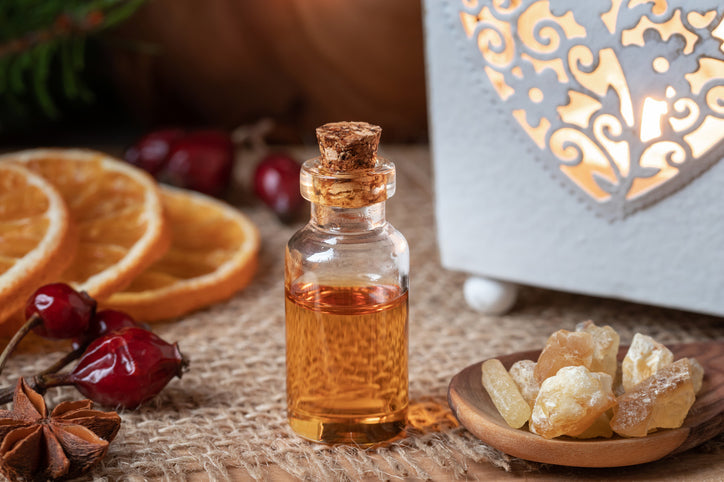Ever heard of an ingredient so treasured it was once worth more than gold? Meet frankincense – the ancient beauty secret that’s making a modern comeback. Loved for its soothing properties and natural glow-boosting benefits, this “golden elixir” is here to elevate your skincare routine. Ready to find out why it’s a must-have? Let’s dive in.
The Magic of Frankincense: A Skincare Superstar
You might know frankincense from holiday stories, but its skincare benefits are the real gift:
- A Natural Soother: Calms irritated skin with a gentle touch.
- Glow Getter: Helps maintain youthful, radiant skin.
- Universal Appeal: Suitable for every skin type, from dry to oily.
- Nature's Anti-Aging Elixir: Reduces fine lines and wrinkles, improving skin elasticity
- Hydration Hero: Enhances moisture retention for a supple complexion
- Scar and Stretch Mark Ally: Promotes healing and evens out skin tone
- Inflammation Fighter: Soothes redness and irritation, great for acne and rosacea
- Antioxidant Powerhouse: Protects against free radical damage
- Cell Renewal Booster: Stimulates cellular turnover for smoother, healthier skin
- Stress-Buster: Its calming aroma indirectly benefits skin by reducing stress
- Natural Antiseptic: Helps prevent infections and supports wound healing
Whether you’re a skincare newbie or a seasoned pro, this versatile oil has something for everyone.
Small But Mighty: The Power of a Drop
It’s amazing how far one tiny drop can go. Think of it as your skin’s personal masseuse – working wonders with the lightest touch. Add it to your routine, and you’ll notice the difference without needing to drench your skin in product.
A Skincare Ritual That Feels Like Zen
Close your eyes. Breathe in that earthy, slightly spicy scent. It’s not just a treat for your skin – it’s a mini meditation session in a bottle. While your skin drinks up all the goodness, your mind finds a moment of calm. It’s self-care on every level.
Our Frankincense Favorites
At Heliotrope, we believe great skincare should feel good inside and out. So we made sure our frankincense is ethically sourced, giving you all the glow without the guilt.
Try these gems to your routine for a frankincense experience you’ll love:
|
Your pocket-sized relaxation buddy – perfect for on-the-go skin and stress relief. |
|
|
Essential Oil Blend Centering (Frankincense Moss) For the DIY queen or king – mix it into your skincare concoctions or use it as is for some zen-filled self-care. |
|
|
Frankincense & Rose Geranium Oil Serum Your skin’s new bestie. It balances, nourishes, and leaves your face feeling like silk. |
|
|
Olive Leaf & Neroli Moisturizer Pair it with frankincense for the ultimate hydration duo. This moisturizer soothes, hydrates, and keeps your skin happy and glowing. |
Curious to see what frankincense can do for your skin? Go on, give it a try – your future self (and your skin) will thank you.
TIP: Don’t forget to bring back your empty bottles or jars for a refill discount. Save money while saving the planet – that’s a win-win!







Leave a comment